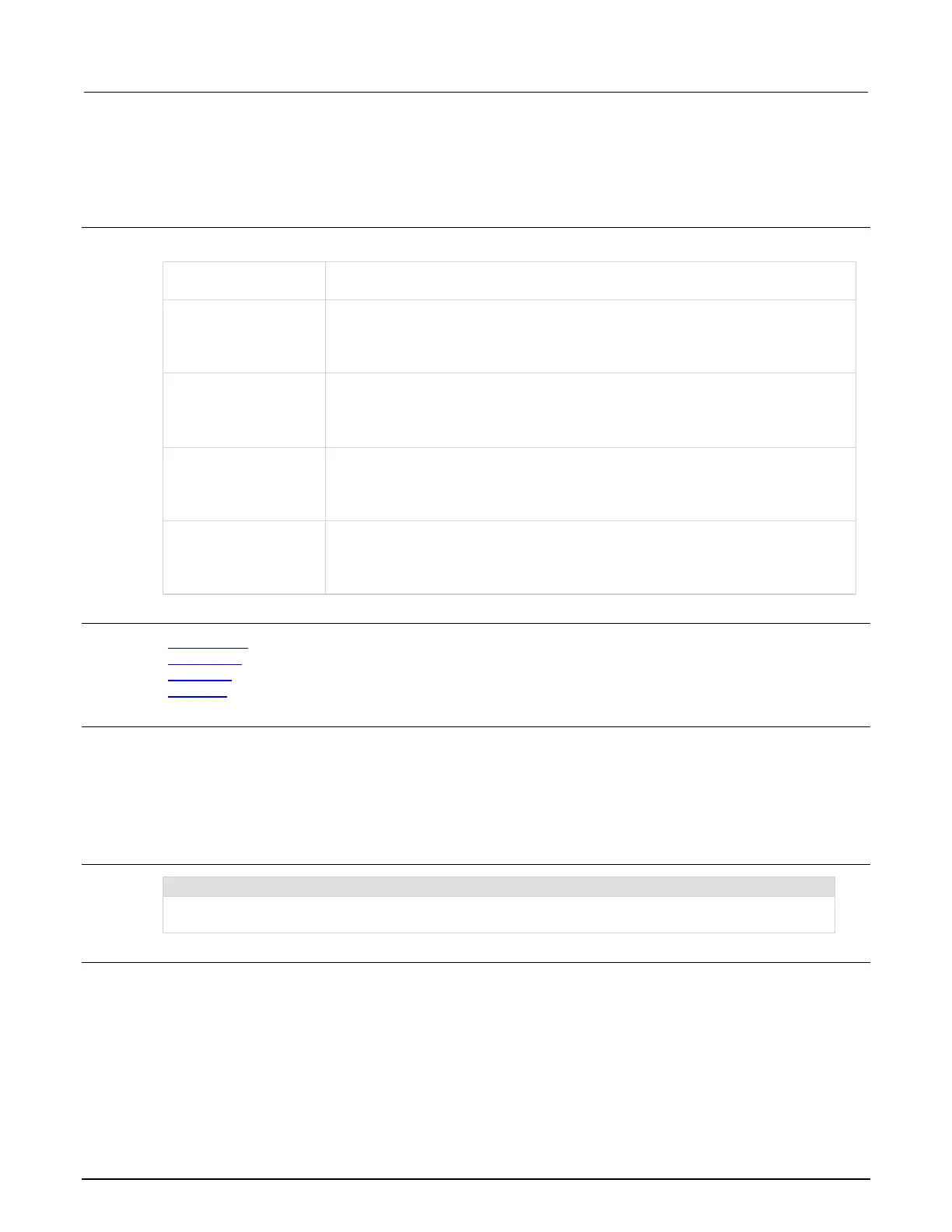9: Keithley External Control Interface (KXCI) Model 4200A-SCS Parameter Analyzer Reference Manu
9-62 4200A-901-01 Rev. C / February 2017
PT
This command sets the pulse period, pulse width, pulse rise time, and pulse fall time.
Usage
PT A, BBB.BBBB, CCC.CCCC, DDD.DDDD, EEE.EEEE
Pulse card channel: 1 to 8; the largest value is the number of channels in the
system
Pulse period in seconds (floating point number):
• 5 V range: 10e-9 to 1
• 20 V range: 500e-9 to 1
•
Pulse width in seconds (floating point number):
• High speed: 10e-9 to (Period − 10e-9)
• High voltage: 250e-9 to (Period − 10e-9)
•
Rise time in seconds (floating point number):
• High speed: 10e-9 to 33e-3
• High voltage: 50e-9 to 33e-3
•
Fall time in seconds (floating point number):
• High speed: 10e-9 to 33e-3
• High voltage: 50e-9 to 33e-3
•
Corresponding LPT library functions
pulse_period (on page 13-148)
pulse_width (on page 13-161)
pulse_rise (on page 13-150)
pulse_fall (on page 13-142)
Details
The pulse period setting affects both channels of a pulse card. For example, setting channel 1 of
pulse card 1 to 100 ms also sets the pulse period of channel 2 to 100 ms. For the other timing
parameters (pulse width and rise/fall time), each available channel can have its own setting.
The minimum transition time for pulse source only (no measurement) on the rise time high voltage for
the 40 V range is 50 ns for the 4225-PMU and 4220-PGU.
Example
PT 1, 100e-6, 20e-6, 200e-9, 200e-9
This command string sets the pulse period of pulse card 1 to 100 µs. It also sets channel 1 for a pulse
width of 20 µs and rise/fall times for 200 ns.
Also see
None

